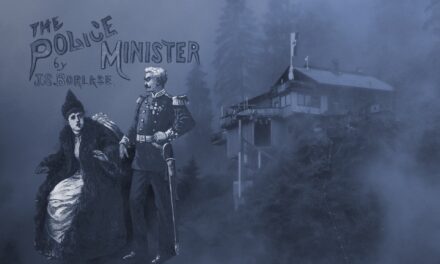
5 Writing Exercises to Help You Create Vivid Story Settings

The setting of your story is an integral part of the impact your book will have on readers. If I’m reading a book and the author describes a beautiful beach or a busy city street well enough that it actually feels like I’m there with the characters, that’s a pretty compelling experience.
If you want readers to fully engage with your work, then learning how to write vivid story settings is critical. But where to start? Here are five exercises for creating vivid story settings by developing stronger sensory details around specific locations in your story world:
1. Describe the setting in which an emotional memory occurred
The first step to writing a vivid story setting is to be able to describe your own. For this exercise, you’ll need a memory that you can connect with an emotion you want to amplify. This will require a bit of soul searching, so be prepared before you dive in. You can choose whatever memory you want, so just be sure you’re not delving too deeply into something that could be triggering unless it’s something you’re mentally prepared to explore.
Think back to your memory. Describe the setting in detail—all of its elements: weather, time of day, and mood; emotions; action; dialogue; sensory experiences (sight, sound, taste, etc.). Think about the connection between these things and what emotions were triggered by each element. Be open about what was on your mind at this time—did you feel anything specific? Most of all, explore how your emotions changed your experience of that location.
2. Research a place you’ve never been and try to write about it as if you have
This exercise is a fun way to get into the mind of a character, especially if you’re writing in a fictional world. It’s also a great way to get inspired for future writing projects!
You can find inspiration for this exercise by using resources such as travel guides, Google Earth, and Wikipedia. You could also use Instagram, Pinterest or other social media platforms if you want to see what people from other places are posting about their cities or hometowns.
Write yourself into a scene (I find this exercise works best in first-person) in your chosen location. Let your imagination run wild, and try to be as specific as possible. What does the air smell like? What does the language or accent sound like? The more detail, the better. And if you want to be a little extra, you could even get a beta reader from that place to read through it and give you feedback on how accurate you are. It can really help get into the imaginative space of a new location and draw attention to the little details that writers often miss.

3. Go to a new or meaningful location and describe where you are
Going to a new location and just describing what you see and experience is a great way to exercise your imagination. Going somewhere new is the easiest way to analyse a location, but if you want a bit more of a challenge, you can also go somewhere that is meaningful to you but try to look at it through new eyes.
This doesn’t have to be an expensive endeavour. You could do something as simple as going to a new cafe or park. The point of this exercise is simply to note and describe what’s around you. All you need to do is open your mind and pay attention.
When I do this exercise, I like to repeat it three or four times. Every visit will give a slightly different experience. You can choose the intervals. For instance, you might like to visit a park during different seasons or visit a cafe on a weekday and weekends to see what changes.
4. Write about your current location from the point of view of someone who has never been there
You’re very familiar with where you are and where you come from, so writing about it from the point of view of a character can help open your eyes to different ways of describing your surroundings. This is an exercise I often recommend to memoirists especially. It will help keep your locations fresh and interesting.
You can choose the town where you live or be as granular as the room you’re sitting in. Describe where you are from the point of view of a stranger, or if you’re writing fiction, you could even choose a character from your story and describe them experiencing where you are for the very first time. This can be lots of fun!
Other great variations on this exercise are to choose a historical figure, a fantasy character, or someone from the future to really let you explore your location from different angles.

5. Choose a setting from your current project and write a scene including two characters who wouldn’t usually be there
Use this exercise to build a better sense of your story setting from the ground up. It’s also a great way to get even more invested in your characters, as you’ll need to make sure their reactions are believable and consistent with who they are as people.
Choose any setting from your current project and write a scene including two characters who wouldn’t usually be there. Use this opportunity to get creative—the more unusual the pairing, the better! This can be anything from putting a protagonist into an entirely new location or making them interact with someone they never meet in the plot.
This exercise works so well for helping build rich worlds: it’ll help you develop a strong idea of how people interact in your world, and how different people might experience locations in a different way.
And that’s it! Writing exercises are a great way to get yourself thinking creatively and flexing those creative muscles. You don’t have to do all of these; just pick and choose whichever best serves the needs of whatever project you’re working on. But whichever one(s) you choose are guaranteed to get you thinking about your writing in more detail, and will ultimately help keep your writing fresh and exciting for readers.





























